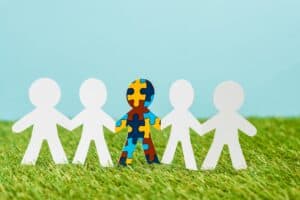Receiving a diagnosis of Autism Spectrum Disorder (ASD) can be a challenging and confusing process for many families. With a growing awareness and understanding of autism, more children and adults are being diagnosed with this neurodevelopmental condition. It is crucial to navigate this journey with knowledge and patience, as early intervention and support are key in managing the challenges that come with ASD. From recognising the early signs to seeking a diagnosis from a qualified professional, this blog post aims to provide guidance on how to navigate the diagnosis of ASD, helping families access the resources and support they need to thrive.
Key Takeaways:
- Early intervention is crucial: Identifying and diagnosing autism spectrum disorder early can lead to better outcomes and improved quality of life for individuals.
- Comprehensive assessment is essential: A thorough evaluation by a multidisciplinary team is necessary to accurately diagnose autism spectrum disorder and determine the individual’s specific needs.
- Support and understanding are key: Providing support, acceptance, and understanding for individuals with autism spectrum disorder can greatly enhance their well-being and development.

Recognizing the Signs and Symptoms
When it comes to identifying Autism Spectrum Disorder (ASD), recognising the signs and symptoms is crucial. Early detection can lead to early intervention, which can greatly improve the outcome for children with ASD. Understanding the key indicators can help parents, caregivers, and healthcare professionals in navigating the diagnosis process.
Early Developmental Indicators
Early developmental indicators of ASD may include delayed speech or lack of babbling by 12 months, avoidance of eye contact, limited gestures such as pointing, and a lack of response to their name. Another red flag can be a preference for playing alone and a resistance to changes in routine. It is important to note that not all children with ASD will display all these indicators, and some may exhibit additional signs not mentioned here.
Behavioural and Social Cues
Behavioural and social cues can also provide important clues to the presence of ASD. These may include repetitive behaviours or movements, such as hand-flapping or rocking, an intense fixation on specific topics, difficulty in understanding social cues like facial expressions or tone of voice, and challenges in forming and maintaining relationships. These cues can manifest differently in each individual, making diagnosis complex but crucial for tailored support.
Understanding behavioural and social cues can help in recognising ASD early on, allowing for timely intervention and support. Parents and caregivers play a vital role in observing and reporting these cues to healthcare professionals, who can conduct further assessments and provide necessary guidance and resources for the child and their family.

Approaches to Diagnosis
Diagnosing Autism Spectrum Disorder (ASD) is a complex process that requires a thorough evaluation by a team of professionals. There are various approaches to diagnosis that can help capture the diverse range of symptoms and behaviours associated with ASD.
Multidisciplinary Evaluations
Multidisciplinary evaluations involve a team of specialists from different fields, such as paediatrics, psychology, speech therapy, and occupational therapy. This holistic approach allows for a comprehensive assessment of the individual’s development, behaviour, and communication skills. By considering input from multiple professionals, a more accurate diagnosis of ASD can be made, leading to appropriate interventions and support.
Collaboration among professionals in multidisciplinary evaluations is crucial to ensure that all aspects of the individual’s functioning are thoroughly assessed. This comprehensive approach helps to identify the specific strengths and challenges of the individual, paving the way for tailored interventions and support strategies.
Diagnostic Tools and Assessments
Diagnostic tools and assessments play a vital role in the diagnostic process of ASD. These tools may include standardised questionnaires, observations, interviews, and developmental assessments. They help to gather information about the individual’s social skills, communication abilities, repetitive behaviours, and sensory sensitivities.
It is important to note that diagnostic tools and assessments should be administered by trained professionals with experience in assessing ASD. This ensures the accuracy and reliability of the results, leading to a more precise diagnosis and appropriate interventions for the individual.
After the Diagnosis
Receiving a diagnosis of Autism Spectrum Disorder (ASD) can be overwhelming for families, but it marks the beginning of a journey towards understanding and support. The Autism Diagnosis Workbook: A guide to navigating… is a valuable resource that can help families navigate the complexities of an ASD diagnosis and empower them to make informed decisions about their child’s care.
Exploring Treatment Options
When it comes to treating ASD, there is no one-size-fits-all approach. It’s essential to work closely with healthcare professionals to explore the various treatment options available. Early intervention is crucial in helping children with ASD reach their full potential. From behavioural therapy to speech therapy and occupational therapy, there are a range of interventions that can help improve communication, social skills, and behaviour.
It’s important to remember that each child with ASD is unique, and what works for one may not work for another. Parents should be actively involved in the treatment process, advocating for their child’s needs and staying informed about the latest research and therapies. Building a strong support network of healthcare providers, therapists, and support groups can also be beneficial in ensuring the best possible outcomes for their child.
Dealing with Challenges and Misconceptions
When navigating the diagnosis of Autism Spectrum Disorder (ASD), it is crucial to address the challenges and misconceptions that may arise. Understanding the social and educational systems is essential in ensuring individuals with ASD receive the support and resources they need. Additionally, addressing common myths about autism is fundamental in promoting awareness and acceptance of this neurodevelopmental condition.
Navigating Social and Educational Systems
Individuals with ASD may face difficulties in social interactions and educational settings due to the unique way they perceive the world. It is important for parents, caregivers, and educators to collaborate in creating tailored support strategies to help individuals with ASD thrive in social and educational environments. Establishing open communication channels and fostering a supportive network can greatly enhance the overall well-being of individuals with ASD.
Addressing Common Myths about Autism
There are several misconceptions surrounding autism that can hinder understanding and acceptance of individuals with ASD. One common myth is that all individuals with autism have extraordinary abilities, often portrayed in the media. It is crucial to debunk such myths and highlight the diversity of strengths and challenges that individuals with ASD may possess.
By promoting accurate information about autism and challenging stereotypes, we can create a more inclusive society that celebrates the unique qualities of individuals with ASD. Educating the public about the realities of autism helps in fostering acceptance and support for individuals with ASD in various aspects of life.

Conclusion: Navigating the Diagnosis of Autism Spectrum Disorder
Receiving a diagnosis of Autism Spectrum Disorder can be overwhelming for individuals and families alike. Proper navigation through this process is crucial to ensure the right support and interventions are provided. From recognising the early signs to seeking professional assessment, understanding the diagnosis and its implications is essential for creating an effective care plan. By seeking guidance from healthcare professionals, therapists, and support groups, individuals with Autism Spectrum Disorder can lead fulfilling lives and reach their full potential. Note, a diagnosis is not a definition but a tool to access the necessary resources and services to thrive.
FAQ
Q: What is Autism Spectrum Disorder?
A: Autism Spectrum Disorder (ASD) is a neurodevelopmental disorder that affects communication, behaviour, and social interaction.
Q: What are the common signs of Autism Spectrum Disorder?
A: Common signs of Autism Spectrum Disorder include difficulties with social interaction, communication challenges, repetitive behaviours, and restricted interests.
Q: How is Autism Spectrum Disorder diagnosed?
A: Diagnosis of Autism Spectrum Disorder involves a multidisciplinary evaluation, which may include interviews, observation, developmental screening tools, and assessments by healthcare professionals.
Q: At what age can Autism Spectrum Disorder be diagnosed?
A: Autism Spectrum Disorder can be diagnosed as early as 18-24 months, although in some cases, diagnosis may occur later in childhood or adolescence.
Q: What are the potential causes of Autism Spectrum Disorder?
A: The exact causes of Autism Spectrum Disorder are not fully understood, but a combination of genetic and environmental factors is believed to play a role in its development.
Q: What are the available treatments for Autism Spectrum Disorder?
A: Treatment for Autism Spectrum Disorder may include behavioural therapies, speech therapy, occupational therapy, and educational interventions tailored to the individual’s needs.
Q: How can parents and caregivers support individuals with Autism Spectrum Disorder?
A: Parents and caregivers can support individuals with Autism Spectrum Disorder by creating a structured and predictable environment, promoting communication and social skills development, and seeking guidance from healthcare professionals and support groups.







